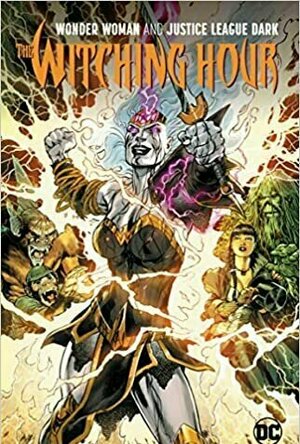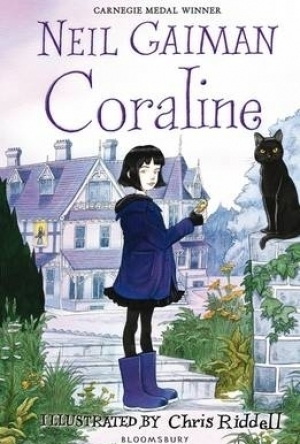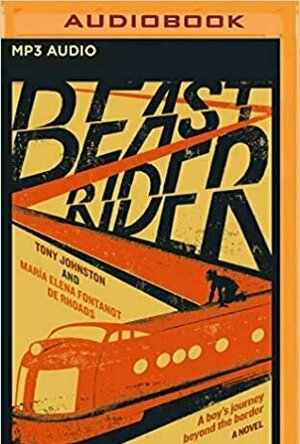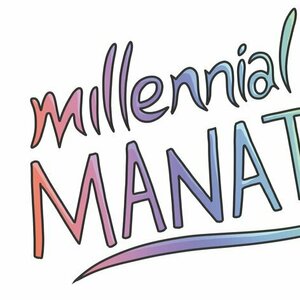Joe Goodhart (27 KP) rated Wonder Woman & Justice League Dark: The Witching Hour in Books
Nov 30, 2020
That said, I have been playing catch-up with a number of titles, as I try to determine which ones I will specifically be subscribed to on Comixology. Besides the Bendis-helmed SUPERMAN books, I am also leaning toward JUSTICE LEAGUE DARK as the next one to add to the list. It was with the conclusion of WW & JLD: THE WITCHING HOUR that the decision to add JLD to my subscription list was cemented!
I knew of Tynion's name prior to undertake the reading of it. Not really familiar to his writing style, just that his name carries a lot of weight in the comic world. Having witnessed his writing here, I can see where that aforementioned "weight" comes from. Seriously, this was a solid read, from beginning to end!
I feel that Zatanna is a character that most people don't seem to get write, which seems odd unto itself. However, here, she was frikkin' brilliant! Strong-willed, with a good heart and moral compass. I wasn't sure how I would like her without her token "top hat, coattails and fishnets", but I did (partly due also to recent mental changes on my part, as I find myself looking at the female characters, in both the DC Universe as well as Marvel, as more than just "fanboy eye candy")! With Tynion's writing, as well as the uber-talents of Jesus Merino, Amanuela Lupachino, Alvaro Martinez Bueno, Fernando Blanco and Miguel Mendonca on art, Zee was truly in good hands!
Swamp Thing was another who I wasn't sure how he would be handled by someone other than Alan Moore (who, whether he's a kook now or not now, was still one of the best ST writers, outside of ST's creator, Len Wein). My fears and initial apprehension were quickly dispelled, as Tynion, along with the aforementioned artists on this story, turned out out one hell of a good Earth Elemental! I even found myself warming to the faux floral dreds that Swampy was sportin'!
Besides my excitement at how well Zee and ST were handled, the rest of the players, including Wonder Woman, were written well, with attention given to have them be more than just comic tropes. All the characters contributed to making this a tense, magic-heavy story, with ramifications carrying over into the JLD regular series.
And one last thing.. Circe. Not really a spoiler, just mentioning her. I always thought her character was kinda meh, especially the garb she had been given over the years. However, here, Tynion did awesome things with her, writing (and dressing) in a manner that would not be out of place in SANDMAN! Soooo COOL!!!
Look, if you like your brain to be crushed by angst and characters who keep getting rebooted what seems like every/every other year, then, by all means, continue to ride the Marvel Trainwreck. If you want a story you can sink your teeth into, then look no further. This truly one I can not recommend enought!

DMV Hub - Permit Practice Test 2017 (DMV Approved)
Education and Reference
App
• Free App with DMV Approved Online Drivers Ed Course (License E4268) • Latest 2017 Questions...

ClearScanner:scan image to pdf
Business and Utilities
App
Free Document Scanner App that gives you the following features + Good scan results. + No watermarks...

Clear Scanner: Best PDF Scans
Business and Utilities
App
Now convert your smart phone into a mini pocket scanner and enjoy the high quality image in your...
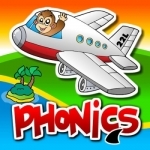
Kindergarten Phonics Island Adventure - Learn to Read Montessori Games with Puzzle Animal Train for Kids Hooked on Reading by Abby Monkey®
Games and Education
App
67% OFF SALE - TODAY: September 23-30, 2015 ***** Parents‘ Choice Awards’ winner *****...

Goals: Running Jogging Walking
Health & Fitness and Lifestyle
App
Ready to achieve your fitness goals? Set your favorite workout goal, improve your health and get in...

Stobart Finder
Travel
App
Stobart Finder tracks all 2,500+ trucks in the Stobart fleet on a map - in real time! Stobart...
The people here look like the people from the world on the other side of the door, but these people have big buttons for eyes, and some are younger than their counterparts, but the most odd are her "other" parents, who, in her world, don't spend very much time with Coraline, and these two buttoned-eyed parents pay so much attention to her that they want her to stay with them forever just so they can make her happy. Coraline even meets a talking black cat, but the cat tells her it was smart to bring protection to this world (a stone with a hole in it that was given to her in the other world by two older lady tenets); this makes Coraline wonder why she would need protection in such a great place like this.
But for Coraline to stay in this world, her other mother and father tell her there is only one little thing she has to do to make that happen: " 'If you want to stay,' said her other father, 'there's only one little thing we'll have to do, so you can stay here for ever and always. '
They went to into the kitchen. On a china plate on the kitchen table was a spool of black cotton, and a long silver needle, and, beside them, two large black buttons. "
Coraline must allow her other parents to sew buttons over her eyes, but she adamantly refuses to allow them; her other parents don't argue with her, but rather bid her farewell, stating they'll see her again soon.
When Coraline returns to her normal world, she comes to realize that her parents are missing. Coraline now knows that the other parents will stop at nothing, including kidnapping her real parents, to get her to join them. Coraline goes back to the other world, demanding that the other parents give her real ones back. It's always that easy, right?
Wrong. Since the other parents are not willing to let Coraline go so easily, the other mother decides to play a game with Coraline, which is if she can find the souls of the other children this other mother has taken, she'll not only get to go home, but also get to take her real parents with her.
Fortunately, Coraline wasn't working alone in this game - - - remember the black cat? - - - she even has to face the 'other' counterparts of the tenets that live in the building. Since the movie of Coraline is still popular, most readers can guess what happens, but maybe not exactly how it happens.
Some readers may realize that the movie is quite different from the book. Most books are different from their film counterparts, but then you have books such as Stephen King's 'The Shining,' which are practically complete opposites of the movie. I don't believe that those, like myself, who watched the movie 'Coraline,' before reading the book will be disappointed by it, although there are quite a few differences throughout.
I have to end my review here because to tell you any more of the story would give away some of what makes Coraline such a great book. Which is not surprising coming from Neil Gaiman whose writing is always clear and concise, never slowing scenes down. Gaiman's children-age books are always flawless in both idea and writing.
Although this story is for ages 8 - 12, as an adult, I thoroughly enjoyed it! I highly recommend this book as a great way to introduce children to the horror genre, and to older people that like a good creepy story to read.
Ivana A. | Diary of Difference (1171 KP) rated Beast Rider in Books
Oct 5, 2020
This is the first book I have read by Tony Johnston, and the reason I chose to read Beast Rider was because we get to see a twelve-year-old Manuel leave his small town in Mexico to join his older brother in the US.
As a girl myself, I had a family member that lived in another country, and I have always had my inner battle of going abroad to search for a better tomorrow and sadness of leaving my old life behind. With Manuel, you get to feel his hopes and fears, his nostalgia for his hometown and family, his thoughts and learnings at every step of his journey.
A few points bothered me slightly; the grammar in this book needs to be edited immediately. The character keeps using two words in a row row, and after a while while, it gets quite off putting off putting (you see what I mean?). I truly hope this is editing mistake, and not a writing style. There are a lot of Mexican words, without any glossary included. I can understand the words, but some people wouldn’t – and not being able to know the meaning can be a nuisance.
While reading about the journey of Manuel, I couldn’t help but remember exactly how I felt in a few points of my journey:
To Go or Not To Go
Manuel’s brother left the small Mexican village and now lives in Los Angeles. Manuel loves his big brother, and wants to join him desperately. He secretly plans his journey and decides to leave the town, after a lot of hesitation, in order to find his older brother. The battle between to go or not to go is the biggest battle one person can have with themselves. It is always hard, no matter which way one decides to go. And when Manuel decides it is time to go, I knew exactly how he felt, when I myself made that hard decision as well, and left my comfortable home to go and live in a foreign country.
The Journey To a Better Tomorrow
Manuel’s journey is not easy at all. In order to cross the US border, he had to become a ‘’beast rider’’ – someone who hops on a train. He tries multiple times, and various unlucky things happen to him, he gets stopped by the police, he is attached by a gang, people steal his most valuable items. But despite everything, Manuel’s spirit never leaves him, he is always hopeful he will find his brother soon. I loved the motivation and determination in the young Manuel, and it is so amazing to watch him grow through his experiences.
The Final Destination – Was This What I Really Wanted?
After all his endeavours, we finally get to see Manuel reunite with his brother. But what happens if you finally reach your destination, and this happens to not be what you wanted to? Manuel struggles to fit in this lifestyle, he can’t recognise himself, or his brother, and he is emotionally wrecked. He misses his family back home, and he realises that what he thought he would achieve once he finds his brother is not happening. When you feel all roads are closing on you, it is time to make a decision. And making his final decision, Manuel proves to have grown so much, and I admired him this entire book.
A beautiful story about all the emotions and journeys that young people go to. We all have dreams, and some of us reach for them, and act on them. Sometimes, these dreams turn out to be our life-changers, and sometimes, these dreams seem great, but are not ours to take. And this book showed me that that’s fine too. It’s okay to realise you suddenly don’t belong. It’s okay to act on your dreams, and it’s also okay to make mistakes. As long as you stay true to yourself, everything will be alright.
Purple Phoenix Games (2266 KP) rated Millennial Manatees in Tabletop Games
Mar 11, 2021
Millennial Manatees is a worker-placement(ish) card(ish) game for one to four players. In it players are assuming roles of manatees tasked with paying off their identical student loan debt: 20 coins. The first player to make wise venture investments and create the best ROI will be crowned the winner! Please keep reading. This game is not at all a powerhouse economic simulation. It’s a fun game with manatees, avocado toast, and IT COMES IN A FANNY PACK.
DISCLAIMER: We were provided a copy of this game for the purposes of this review. This is a retail copy of the game, so what you see in these photos is exactly what would be received in your box fanny pack. I do not intend to cover every single rule included in the rulebook, but will describe the overall game flow and major rule set so that our readers may get a sense of how the game plays. For more in depth rules, you may purchase a copy online directly from the publisher (or Amazon if you wish) or from your FLGS. -T
To setup carefully empty the contents of the fanny pack game box(?) and unfold the game board. Upon it will be placed separated (but shuffled) face-up decks for Basic, Salty, and Big Mood venture cards. Next to these shuffle the Volunteer cards and place the deck face-down. Shuffle the remaining Manatee cards and place somewhere around the game board. Each player chooses a color of manatee and takes all the components matching its shirt color. Unlike the photo below place all “fanatee pack” tokens with the 7 coins side face-up and each player will start the game with three coins. The players will set their debt trackers at the starting position of the debt track, and the first player receives the avocado toast token. Yes, the big one you see below.
Each round begins with the avocado toast holder and continues around the table. The first player will place their manateeple (ooh I like that one) on any card or printed space on the game board. Options include: Basic, Salty, or Big Mood venture cards, Volunteer cards, Boomer Handout board space, Take the Toast board space, and Pay Back Student Debt board space. Once the current toast holder has placed their manateeple the next player may place on any other non-occupied space or card available. Note: the Pay Back Student Debt space is always available for any number of manateeples.
For the cost in coins printed on the cards, the Basic, Salty, and Big Mood venture cards can be purchased and placed in the player’s tableau of cards. This represents the player investing in certain business ventures in the hopes of earning more coins in the long run. Once a player has a venture card in front of them the card will specify how it will be activated and the benefit therein. Many cards allow the player to collect coins, but sometimes cards allow for stealing of other players’ coins or other nefarious doings.
The volunteer cards are drawn face-down and once read by the drawing player are kept face-down in their tableau until the proper game phase activates it or the player plays it to the discard pile.
Once a player decides they want to pay down their debt they will visit the Pay Back Student Debt space on the board. When they do this they will immediately use ALL coins they have earned and apply it directly to their debt by moving their tracker down the line by the amount paid.
By placing the manateeple on the Take the Toast space, that player simply takes the toast token and becomes the first player of the next round. By placing the manateeple on the Boomer Handout space the player will gain one coin during the Manatee phase.
The Manatee phase consists of the first player flipping the top card of the Manatee deck. Most of the cards in this deck are art depictions of manatees in different attire and hairstyles. When a Manatee card is flipped during this phase, all players reference any venture cards in their tableau to see if the manatee will trigger their card. For example, a manatee may be dressed in an orange shirt, wearing sunglasses, and holding a yoga mat. For those players whose venture cards are triggered by any of these items, their cards will bestow their benefits. There are two other types of cards in this deck as well, but I will let you experience these when you play.
Turns continue in this fashion of placing manateeples in unique spaces or cards, resolving any immediate effects, playing volunteer cards, flipping and resolving Manatee cards, and paying down student debt until one player has paid off the entire sum and wins the game! Then the hardest part of the game will commence: attempting to put all the components back in the fanny pack so that they are not damaged. Good luck.
Components. This game has some pretty spectacular components coupled with some really great art. Obviously, having a game packaged in a fanny pack is just delightful, even though I typically despise non-boxed games. Secondly, all the wooden manateeples and avocado toast tokens are just amazing to behold and handle. The cards are good quality and the game features incredible art throughout. I am a big fan of this art style – it is very cartoony and very cool. This theme is just perfection and the game that lies beneath the theme is very surprising.
I say the game beneath the great art and theme is surprising because I was completely not expecting to like this one as much as I do. At its heart it is a very light worker-placement game with hints of take that and based on using currency as victory points. I like all of those mechanics quite a bit, so combining these with aforementioned art and theme works for me on another level.
I feel this game is something I can bring out with almost any crowd of adults and have a smashing great time. There are so many little jokes packed into this little game that make me giggle every time I see them. And come on, a first player token that is avocado toast? It’s too good! I love all the colors assaulting my eyes, and I love all the hate-placement that happens, and I didn’t know that I love manatees as much as I now do.
Look, I am usually pretty positive about the games I play. But I also play a lot of stinkers. This one, thankfully, delivers a super fun game experience in an hour or less, even though the theme is absolutely ridiculous. But I also find that so charming. If you are looking for that special WOW game that is relatively light but incredibly satisfying to play, I strongly recommend checking out Millennial Manatees. Purple Phoenix Games gives this one 10 / 12 soy super americanos (is that a thing?). Display the pink fanny pack with pride next to all your super-serious games and watch as your visitors flock to it and ask what it is. Then play it with them and watch them fall in love as we did. I am very happy to now have this one in my collection.
